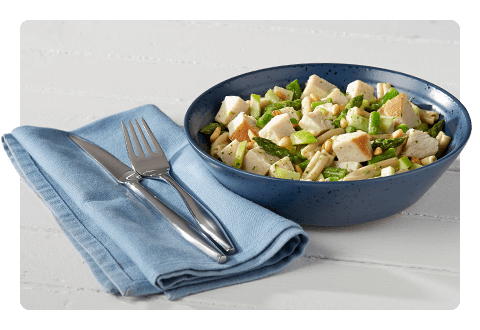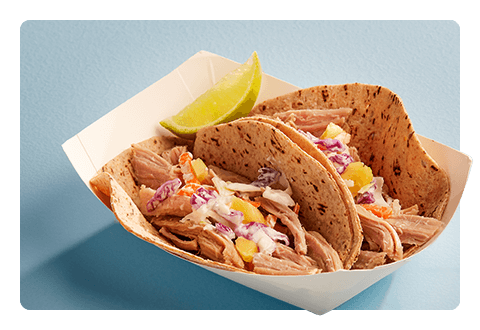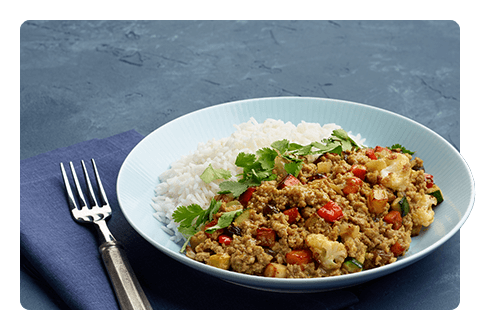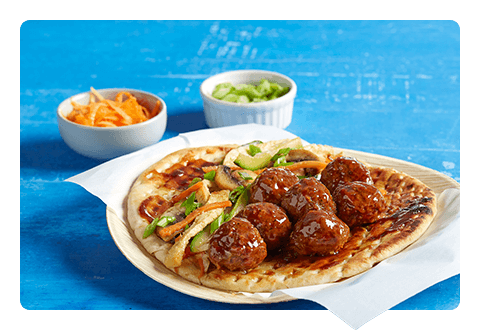How to Make Your Menu Savory
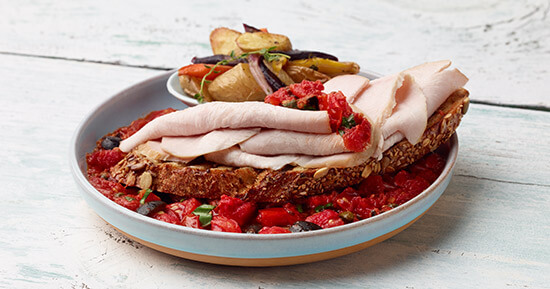
Savory is a highly popular flavor among consumers—Technomic reports that 65% of consumers find it appealing, which beats out its counterparts, such as sweet, smoky, spicy and bold, by at least a 13% margin. Beyond liking the flavor, diners can also be attracted to savory meals based on nutritional preferences. Since savory flavors are usually lower in sugar, they’re often viewed as being healthier.
Historically defined as the opposite of sweet, savory is now associated with the Japanese word “umami,” which means “delicious taste.” Its characteristics include being rich in flavors that are released by cooking, curing or aging. Ingredients high in glutamate create the umami sensation.
Here are some suggestions for how to bring more savory flavors to your menu:
- Use soy. This ingredient has high umami content because of its natural brewing process, in which the proteins split and release natural glutamate. Pavo (Turkey) Saltado is a Peruvian-inspired dish with turkey breast stir-fried in soy sauce and red wine vinegar.
- Add tomatoes. They have high levels of glutamic acid, which increase as they ripen. This Tuscan Roast Turkey features roasted turkey in a spicy basil pomodoro crudo sauce, made with tomatoes, black olives and anchovies.
- Integrate fermented foods. This Kimchi Turkey Burger consists of kimchi, a type of Korean fermented vegetable; a turkey burger coated in sweet soy sauce; and sweet chili mayonnaise.
- Shred some Parmesan. This cheese has umami as a result of its aging process. To add a healthier twist to a hearty, comforting meal, try Spinach-Stuffed Turkey Meatloaf with Parmesan cheese, ground turkey, mushrooms and mozzarella cheese.
- Use spreads and condiments. For a quick transformation, top sandwiches or burgers with this tangy Bacon and Red Onion Jam, a preserve made of sautéed turkey bacon and onions with golden raisins, honey and vinegar.
- Incorporate ethnic tastes. These flavors are often savory and can also inspire fusion dishes. Tzatziki Sauce, with its blend of lemon, garlic, mint, cucumber and yogurt, pairs well with meat dishes or with veggies as a dip.
- Diversify. Consumers prefer different types of savory flavors across the U.S. In the Northeast region, pistachio and Guacamole are flavors on the rise. Southerners favor chipotle lime, chili lime and hickory. Residents of the Midwest enjoy ancho, anchovy and sesame, while those further west opt for pecorino and truffles.
Savory is an in-demand element that enhances meals across all dayparts. As a protein, turkey naturally has this umami characteristic. Its versatility makes it a great platform to bring forward this unique flavor.
What are your favorite ways to use savory flavors? Share them with us on Facebook or LinkedIn. To read more helpful tidbits, visit our Tips page.
SOURCES
Flavor Consumer Trend Report, Technomic, 2017.
Elder, Kara. Artichoke tapenade, Parmigiano ‘gelato’ and other savory spreads for snacking, The Washington Post, May 2018.
Condiments & Dressings Menu Trends, Technomic, Q3 2018.

